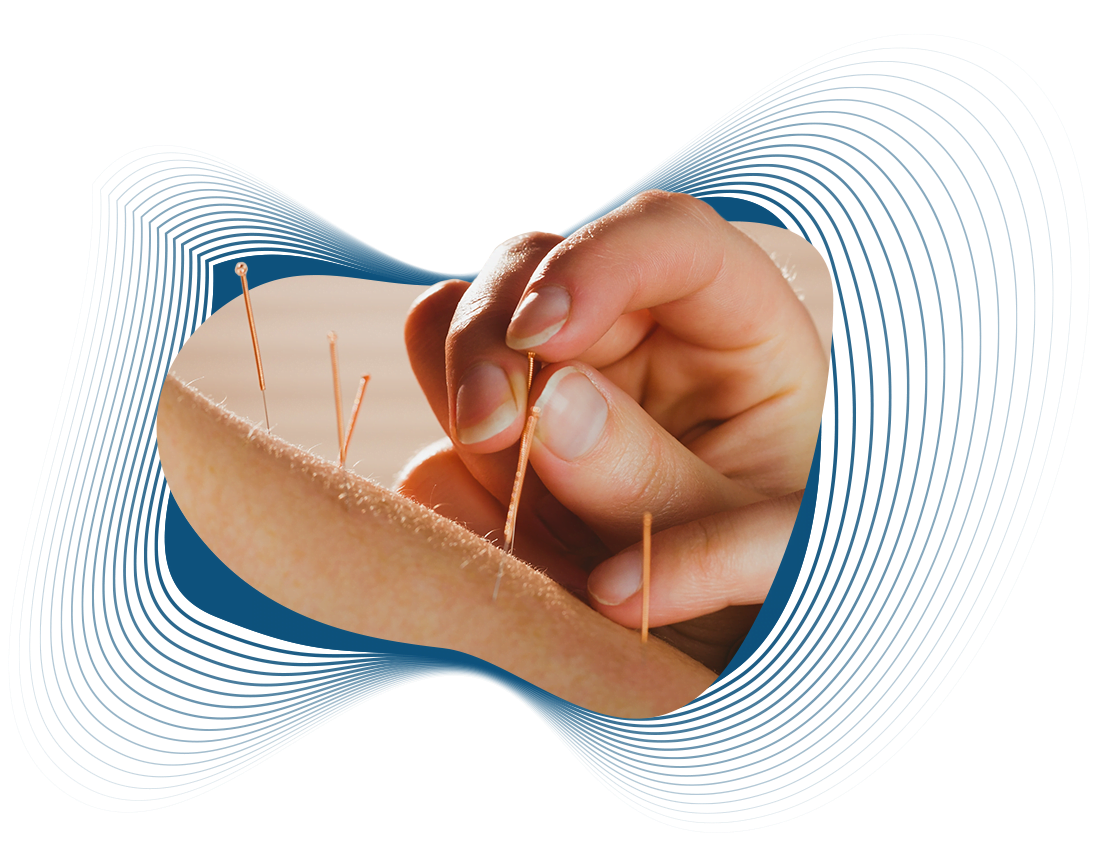Acupuncture

Acupuncture and dry needling are both techniques that involve inserting needles into the body but differ significantly in their principles, techniques, and goals.
Acupuncture
- Origin and Principles:
- Traditional Chinese Medicine (TCM): Acupuncture is rooted in TCM and has been practiced for thousands of years in China and other parts of Asia.
- Energy Flow: It is based on the concept of “Qi” (pronounced “chee”), which is believed to be a vital energy or life force that flows through pathways called meridians in the body. Disruptions or imbalances in Qi are thought to cause health issues.
- Points and Meridians: Acupuncture involves inserting fine needles into specific points along these meridians to restore balance and promote the body’s natural healing processes.
- Techniques:
- Needle Insertion: Needles are inserted at various depths into acupuncture points. The number of needles and their locations depend on the condition being treated.
- Additional Techniques: Sometimes, heat (moxibustion), electrical stimulation, or other methods may be used in conjunction with needle insertion.
- Applications:
- Acupuncture is used for a wide range of conditions, including pain relief, stress management, digestive issues, and more. It is often used as a complementary therapy alongside conventional treatments.
Dry Needling
- Origin and Principles:
- Western Medicine: Dry needling is a more recent technique rooted in Western medical concepts and focuses on neuromuscular issues.
- Trigger Points: It targets “trigger points” or “myofascial trigger points,” which are tight bands of muscle fibers that cause pain and discomfort. The goal is to release these tight areas and improve muscle function.
- Techniques:
- Needle Insertion: Fine needles are inserted directly into the trigger points within the muscle tissue. The technique may involve needle insertion and withdrawal or deeper needle manipulation to stimulate a local twitch response in the muscle.
- No Medication: The term “dry” refers to the fact that no medication or fluid is injected into the body during the procedure.
- Applications:
- Dry needling is primarily used for musculoskeletal pain, such as muscle tension, soreness, and joint pain. It aims to relieve pain and improve range of motion by addressing muscle knots and trigger points.
Comparison
- Philosophy: Acupuncture is based on traditional Chinese concepts of energy balance, while dry needling is grounded in modern anatomical and physiological principles.
- Technique: Acupuncture focuses on specific meridian points to restore balance, whereas dry needling targets specific muscle trigger points to release tension and alleviate pain.
- Training and Practice: Acupuncture is typically performed by licensed acupuncturists or practitioners trained in TCM. Dry needling is often performed by physical therapists, chiropractors, or other healthcare providers trained in the technique.
Both acupuncture and dry needling can be effective for various conditions, but they are used differently and are based on distinct theoretical frameworks.
